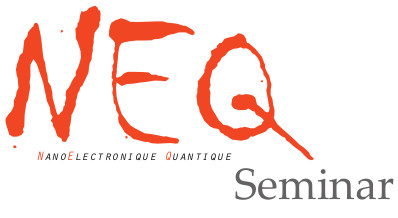- Accueil
- Institut Néel
- Équipes de recherche
- Pôles & Services techniques
- Travailler à l’institut
- Partenariats
- Actualités
- Agenda
- Annuaire

Résumé : Cavity quantum electrodynamics (QED) uses a cavity to engineer the mode structure of the vacuum electromagnetic field such as to enhance the interaction between light and matter. Exploiting these ideas in solid-state systems has lead to circuit QED which has emerged as a valuable tool to explore the rich physics of quantum optics and as a platform for quantum computation. Despite the demonstration of quantum processor units with hundreds of qubits, there remains significant knowledge to be gained from simpler configurations, such as the one qubit plus one cavity system, as exemplified in the subsequent two experiments presented here. In part I, we introduce a simple approach to further engineer the light-matter interaction in a driven cavity by controllably decoupling a qubit from the cavity’s photon population, effectively cloaking the qubit from the cavity. This is realized by driving the qubit with an external tone tailored to destructively interfere with the cavity field, leaving the qubit to interact with a cavity which appears to be in the vacuum state. Our experiment demonstrates how qubit cloaking can be exploited to cancel the ac-Stark shift and measurement-induced dephasing, and to accelerate qubit readout. In addition to qubit readout, applications of this method include qubit logical operations and the preparation of non-classical cavity states in circuit QED and other cavity-based setups. In part II, we will look into the quantum thermodynamics of driving a qubit and exploit it to demonstrate a qubit engine. Resonantly driving a qubit introduces a Rabi angle, changing the state of the qubit but also its internal energy. Indeed, there is an energy transfer between the qubit and the ingoing and outgoing fields and thermodynamic work can be gained in the outgoing field. Here, we exploit these energy transfers to demonstrate and characterize a single-qubit quantum engine fueled by qubit-state measurements. Thanks to quantum-non-demolition qubit measurement and real-time active feedback, a thermodynamic cycle is realized, iteratively extracting work from the qubit into the outgoing field and measuring and resetting the qubit to repeat the work extraction process.
